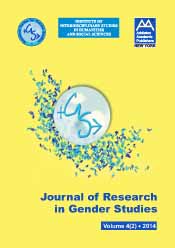AN HISTORICAL PERSPECTIVE ON WOMEN’S SPEECH IN JAPANESE
AN HISTORICAL PERSPECTIVE ON WOMEN’S SPEECH IN JAPANESE
Author(s): RALUCA NICOLAESubject(s): Gender Studies
Published by: Addleton Academic Publishers
Keywords: woman; speech; Japanese
Summary/Abstract: In the Heian period (794-1185) people began to be aware of language differences between men and women. In Japanese diachronic linguistics there are a series of words employed especially by women when they referred to food, tableware, fashion, Buddhist ceremonies or to phrases connected to the feminine physiology. Such words range from phrases referring to the Buddhist ceremonies (saigū imikotoba – linguistic taboos) to words used by the court ladies (nyōbō) and, later, by the courtesans (yūjo). The priestesses attending at the Great Shrine of Ise (saigū) avoided naming directly certain words that were believed to be impure or unlucky: naori (healing ↔ death); kusabira (germ → meat) etc. In the Heian period, the court ladies vocabulary (nyōbō kotoba) pointed at food, etiquette or fashion (the names of the clothes, accessories, the name of the hair styles): o-hiya (water); sekimori (lit. customs officer; meaning: colander); o-naka (cotton). In the Muromachi period (1333-1573), the language of the nuns from aristocratic families (nimonzeki) was not much different from that of the court ladies: hiru naru (to wake up; it was used when referring to the emperor), onaka (cotton). A series of polite phrases that are still in use, were created by nimonzeki: osore irimasu (excuse me, I beg your pardon). In the Edo period (1603-1868) the language used by courtesans (yūjo) was not exactly the same language employed by the townspeople, the most striking differences being those related to one’s profession or to the peculiar way of ending a sentence. Yamato kotoba are those words used in the urban areas, taking on phrases / quotations used in poems or short stories in order to initiate the women into the written culture: nubamata (dreams); sode shigarami (lit. the barrier of sleeves; meaning tears) etc.
Journal: Journal of Research in Gender Studies
- Issue Year: 4/2014
- Issue No: 2
- Page Range: 236-250
- Page Count: 15
- Language: English
- Content File-PDF

